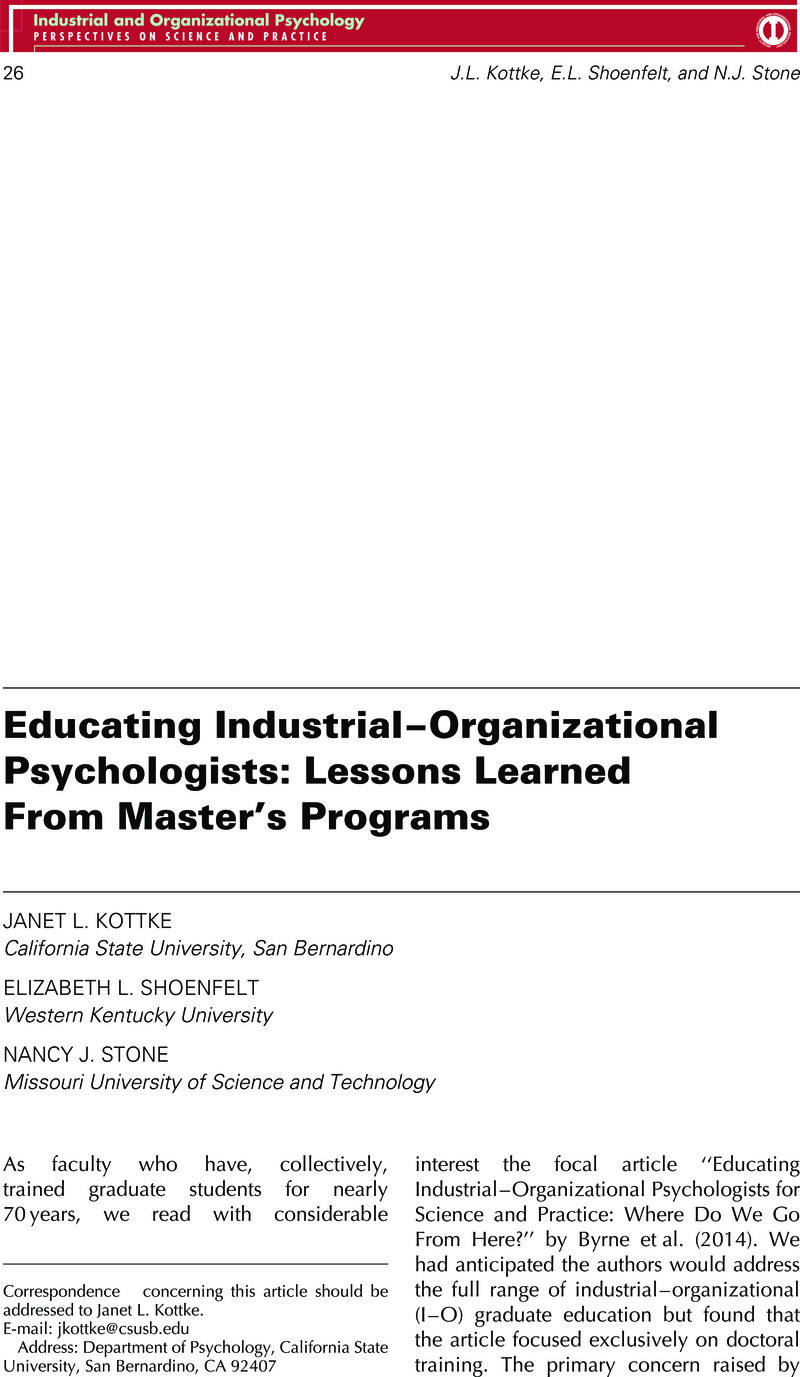Crossref Citations
This article has been cited by the following publications. This list is generated based on data provided by Crossref.
Shoenfelt, Elizabeth L.
Stone, Nancy J.
and
Kottke, Janet L.
2018.
Gaining Organizational Entry and Developing Partnerships for Applied Research and Experience: A Perspective From Industrial-Organizational Psychology Master's Programs.
Industrial and Organizational Psychology,
Vol. 11,
Issue. 4,
p.
606.
van Niekerk, Annelize
Oosthuizen, Rudolph M.
and
Coetzee, Melinde
2024.
Industrial and organisational psychology internship completion: Enabling and thwarting factors.
SA Journal of Industrial Psychology,
Vol. 50,
Issue. ,



